Back in the USSR. The Reverse Restructuring of the Crimean Economy
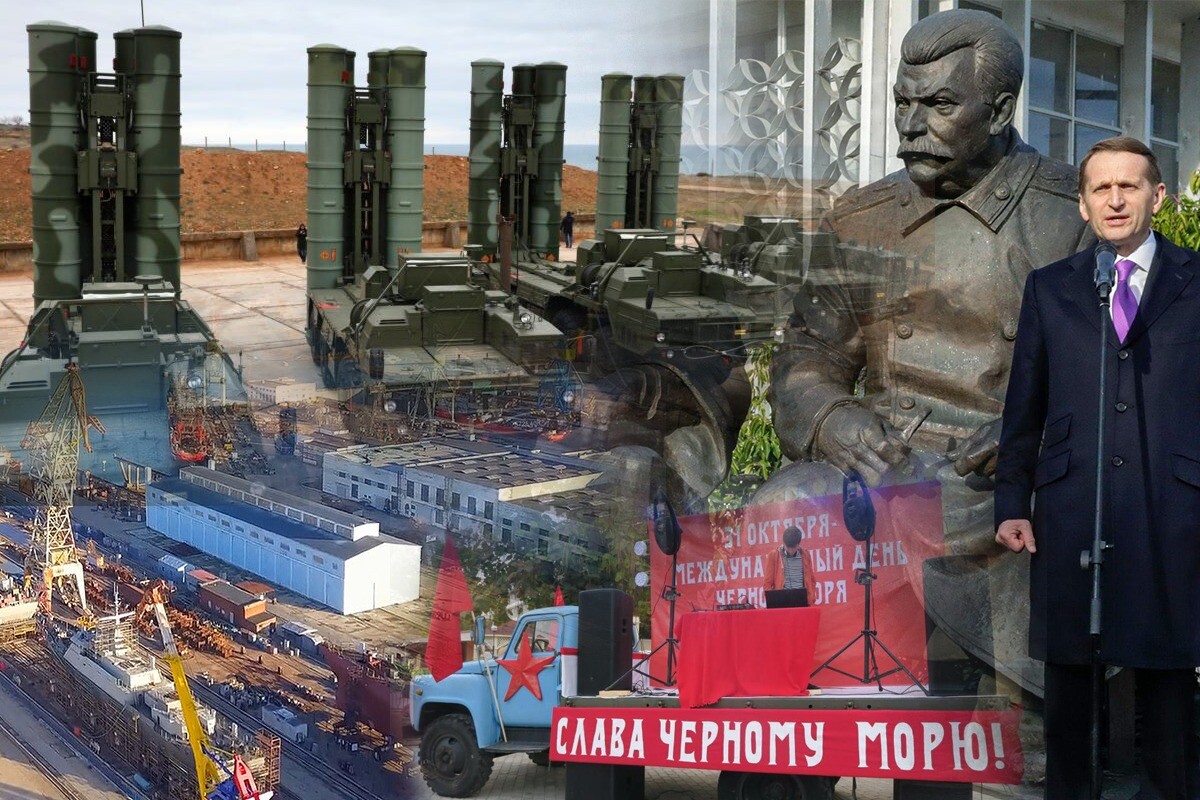
The Monitoring Group of BlackSeaNews
and the Black Sea Institute of Strategic Studies
presents an updated series of articles
«The Socio-Economic Situation in Occupied Crimea in 2014 – 2020»:
Back in the USSR. The Reverse Restructuring of the Crimean Economy
The "Trophy Economy". Militarization as a Factor of Industrial Growth
The "Trophy Economy". The Development of the Stolen Ukrainian Black Sea Shelf
The Commercial Exploitation of Marine Biological Resources
The Crimean "Trophy Economy". The Sale of Ukrainian Property
Occupied Crimea. Exports and Imports in 2014-2020
The Banking System and Investment in Crimea: What is Really Happening on the Occupied Peninsula
Water in Occupied Crimea: No Catastrophe. Just a 50-Year Step Backwards
The Crimean Budget. Small Business. Salaries and Pensions
* * *
The socio-economic situation in Crimea after the occupation and illegal annexation by the Russian Federation is characterized by a rapid return to the Soviet era, ranging from the sectoral structure of the economy to the standards of accounting and reporting and social services for the population.
Despite the myth of Crimea being the "USSR-wide health resort" that existed in the Soviet Union, the real nature of the economic processes in Crimea in the Soviet era was different.
In terms of employment, land use, state investment, and output volumes, Crimea was:
-
first and foremost, a large military and naval, aviation and space base that ensured the Soviet dominance in the Black Sea region and its influence in the Mediterranean and the Middle East;
-
secondly, an industrial and scientific centre of national significance in the areas of military instrument-making and shipbuilding;
-
thirdly, one of the Soviet food industry centres, which specialized in the processing of fish, vegetables, fruits, and grapes.
The Crimean industry was based on the enterprises of military instrument-making in Sevastopol, Yevpatoria, Simferopol, and Feodosia and military shipbuilding and ship repair in Sevastopol, Feodosia, and Kerch.
Crimean shipyards built dozens of large naval ships, while Crimean instrument-making factories manufactured and tested guided torpedoes, weapons control systems, radio equipment, and complex parachute systems, including the ones for spaceships and tank landing.
At the same time, the data related to the defence industry and the military-industrial complex, such as the number of people employed and production volumes, never appeared in public official statistics.
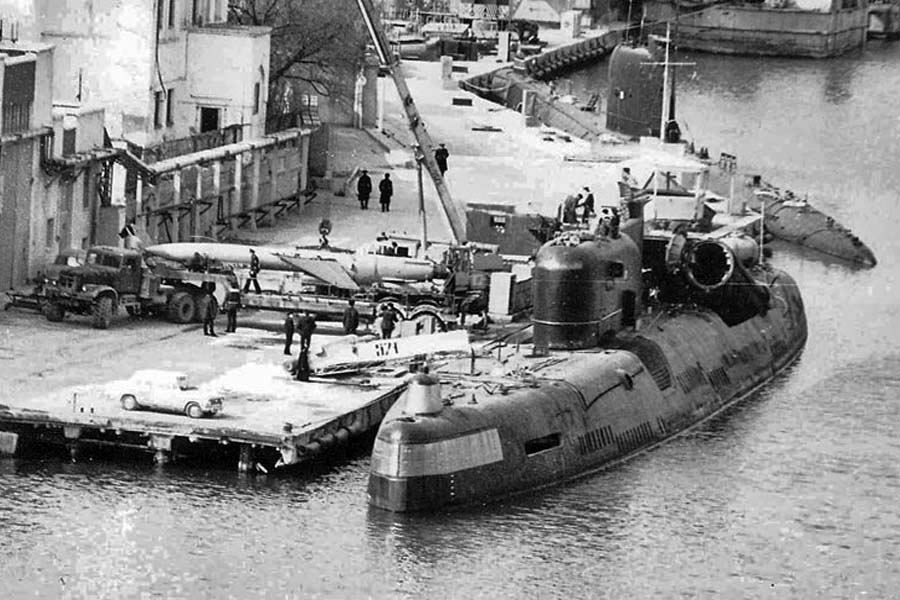
Photo from the BlackSeaNews archive
With the end of the Cold War, during perestroika and in the years following the collapse of the USSR, the main Soviet-era industries of the Crimean economy were completely or mostly lost in the course of the political and spontaneous market changes.
The labour resources released from these industries have been absorbed mainly by small business, which in Crimea has never meant classic entrepreneurship that creates the middle class, but rather a means of survival and self-employment. By 2001, the new economic structure of the peninsula had developed, and until 2010, the food and chemical industries were the main drivers of the Crimean economy. The share of agriculture continued to decline, and its place was increasingly taken by trade and services.
As a result of international sanctions, already by 2015, the leadership of the Russian Federation had begun to realize that their initial ambitious plans for the economic development of occupied Crimea had been unrealistic, and, therefore, they concentrated exclusively on its "military development", while continuing to use the economic development rhetoric.
A telling marker was that the “Ministry of Crimean Affairs” created on 31 March 2014, two weeks after the illegal annexation, was dissolved as early as 15 July 2015
During 2016, the RF completely abandoned the idea of turning Crimea into a "new showcase for Russia". On 28 July 2016, the status of occupied Crimea and Sevastopol within the Russian Federation was lowered: the "Crimean Federal District", which had been created immediately after the annexation, on 21 March 2014, was eliminated by Putin's decree. The so-called "constituent entities of the Russian Federation", the Republic of Crimea and the city of Sevastopol, were merged into the Southern Federal District of the RF with the administrative centre in Rostov-on-Don.
Among other things, that act established a uniform system for the political and administrative governance and the military command, because, since the beginning of the occupation, all Russian military units in Crimea have been part of the Southern Military District with the headquarters in Rostov-on-Don.
Since 2016, the militarization of Crimea has become not only the main focus of Russia's Crimean policy but also the main driver of the occupied peninsula's economy. As a result, for almost 7 years of the occupation, it is the "military development" of the territory that has been the most striking "success story" of the Russian Federation in Crimea.
That "military development of the territory" includes, first of all, building up a giant military base that equals or exceeds in terms of the number of military personnel the largest U.S. military bases around the world. Reliable transport, energy and water supply infrastructure for military purposes and dual-purpose one is being created.
At present, the economies of Crimea and Sevastopol are undergoing the "reverse" restructuring aimed at the priority restoration of the military-industrial enterprises and facilities preserved from Soviet times.
The main components of that "reverse" restructuring of the Crimean economy are as follows:
-
building up the largest in Europe Russian joint force grouping in Crimea at a rapid pace;
-
all Soviet-time military infrastructure and facilities in Crimea, such as numerous military airfields, missile launching sites, air defence facilities, radar systems, and nuclear weapons storage facilities, are currently being rehabilitated;
-
the construction of new and reconstruction of old military compounds for the deployment of new military units, as well as the construction of housing and related infrastructure for the military is underway;
-
to fulfil military orders, the operations of the military-industrial enterprises specializing in military instrument-making, shipbuilding, and ship repair have been resumed as a matter of priority. These enterprises have been included in the structures of Russian state-owned concerns.
It is clear that, as in Soviet times, the official economic statistics do not show figures related to military activity. Therefore, to illustrate the "reverse" restructuring of the Crimean economy, the authors used the available statistics on putting into operation fixed assets by type of economic activity.
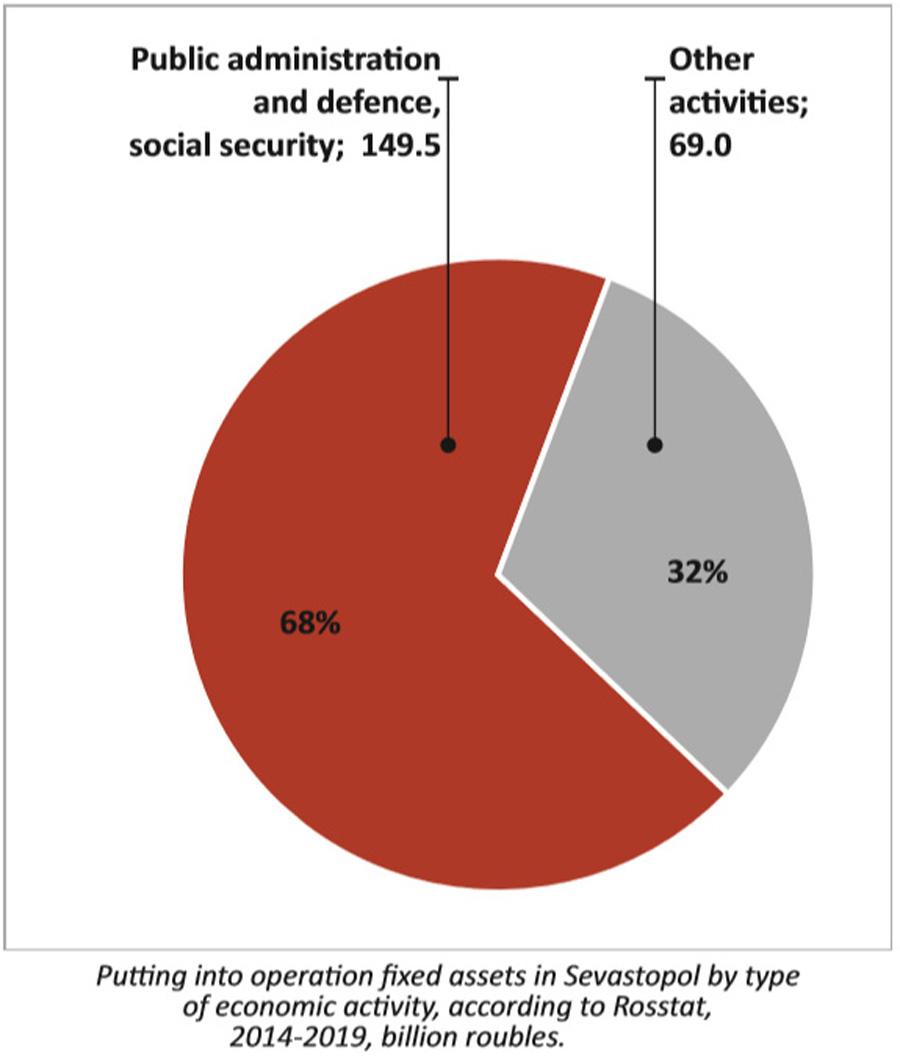 The most interesting type of activity in the official RF’s classification has code 84 and the name "Public administration and defence, compulsory social security". The main ingredient of this Russian cocktail of military defence and social security is the activity listed under code 84.22, "Defence activities".
The most interesting type of activity in the official RF’s classification has code 84 and the name "Public administration and defence, compulsory social security". The main ingredient of this Russian cocktail of military defence and social security is the activity listed under code 84.22, "Defence activities".
"...This class includes administration, supervision, and operation of military defence affairs and land, sea, air and space defence forces such as combat forces of army, navy, and air force, engineering, transport, communications, intelligence, material, personnel forces and commands, reserve and auxiliary forces of the defence establishment, military logistics (provision of equipment, supplies, structures, etc.), health activities for military personnel in the field...".
Thus, the red segments of the figures, especially the one shown in Figure 1, which applies exclusively to Sevastopol, the main base of the Black Sea Fleet of the RF, indicates that over the years of the occupation, military facilities and equipment worth up to 150 billion roubles have been put into operation in Sevastopol. These facilities and equipment were assigned to the Black Sea Fleet and naval aviation headquarters located in the city.
The fact that defence activities account for about 70% of fixed assets put into operation in Sevastopol demonstrates which industry has been given the highest priority in the city’s economy.
The so-called "Republic of Crimea" has somewhat different tasks, which is shown in Figure 2.
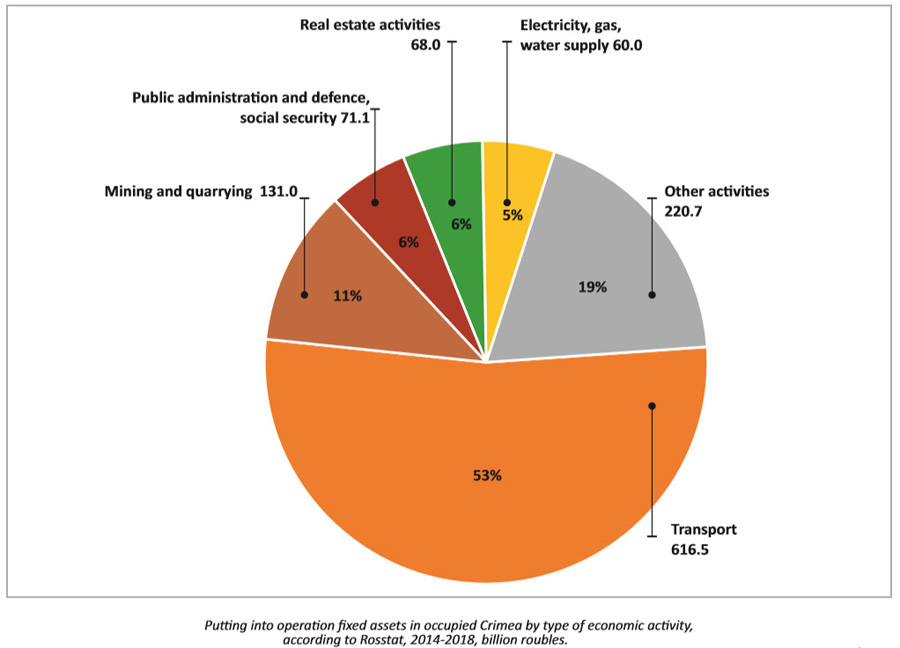
Our analysis of Russian investment activity on the peninsula has demonstrated the following:
the main reason for the existence of the occupied Crimea territory for the RF is to provide transport and critical infrastructure transit from the territory of the RF to the military base in Sevastopol.
This "mission" consists of the following priorities:
-
providing logistics support: reliable and fast transportation of troops, armoured vehicles, missiles and shells, fuel and other supplies from the territory of the RF to military bases and airfields located in or operated from Sevastopol;
-
providing logistics support to Russian military bases in Syria and the Russian Navy squadrons in the Mediterranean;
-
providing military facilities with engineering infrastructure: water supply, sewerage, heat supply, power supply, gas supply, and communications systems (the provision of this infrastructure to the population of the peninsula is funded residually);
-
providing critical services, such as health care, trade, for members of the Russian armed forces, civil servants, law enforcement officers, and their families (the provision of these services to the rest of the population is funded residually).
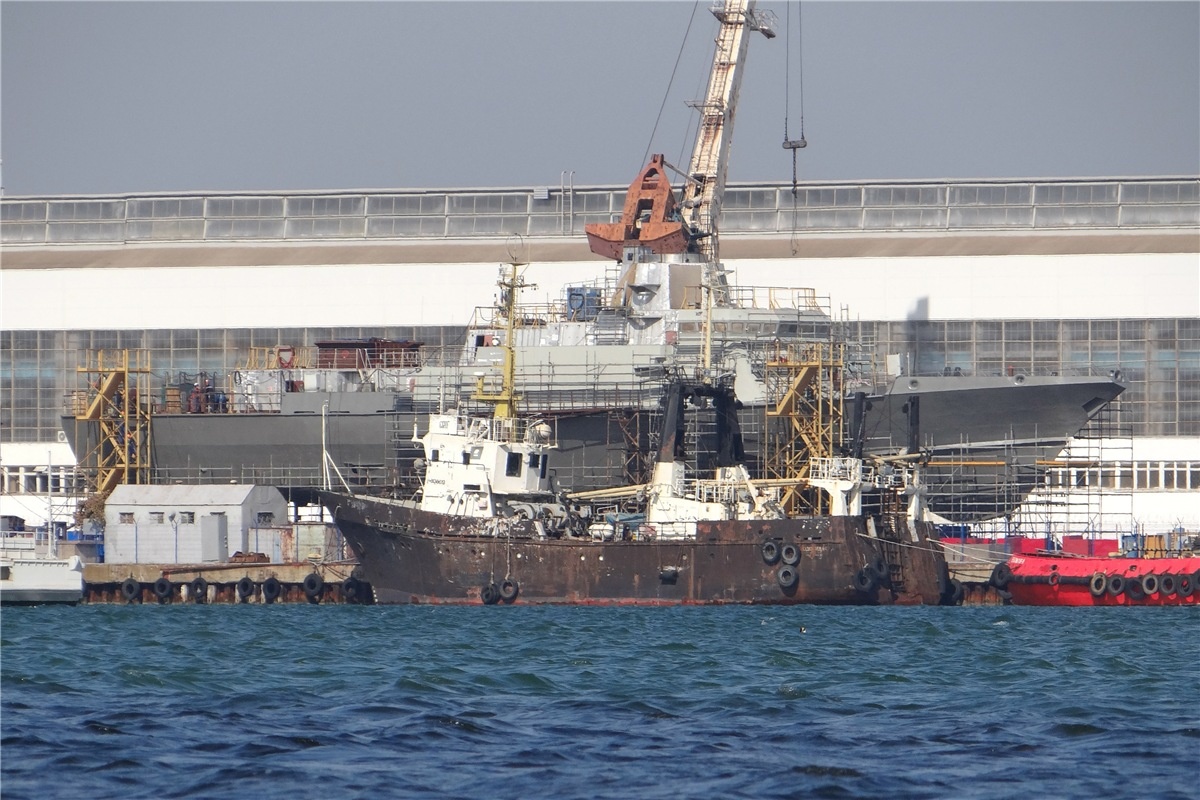
at the seized Ukrainian Zaliv shipyard in occupied Kerch, 2018. Photo from the BlackSeaNews archive
* * *
 This article has been published with the support of ZMINA
This article has been published with the support of ZMINA
Human Rights Centre.
The content of the article is the sole responsibility of the authors.
More on the topic
- 21.08.2023 Peculiarities of the 2023 Crimean Holiday Season — a «Tourism» in Camouflage
- 06.08.2023 Crimea During the Great War. Part 2. Extreme Tourism or «New Types of Tourism» and Tourist Numbers (2)
- 21.07.2023 Crimean Titan: Under a Russian Holding or a Ukrainian Tank?
- 12.06.2023 Crimea during the Great War. The situation in the occupied Crimea in 2022-2023. Military Context (1)
- 23.11.2021 Occupied Crimea. Exports and Imports / 2014-2021
- 23.11.2021 Water in Occupied Crimea / 2014-2021
- 23.11.2021 The Crimean Budget. Small Business. Salaries and Pensions / 2014-2021
- 23.11.2021 The "Trophy Economy". The Commercial Exploitation of Marine Biological Resources in the Black Sea and the Sea of Azov / 2014–2021
- 21.11.2021 The "Trophy Economy". Militarization as a Factor of Industrial Growth / 2014-2021
- 21.11.2021 Back in the USSR. The Reverse Restructuring of the Crimean Economy / 2014-2021
- 20.11.2021 The "Trophy Economy". The Development of the Stolen Ukrainian Black Sea Shelf / 2014-2021
- 20.11.2021 The Occupied Crimean Tourism / 2014-2021